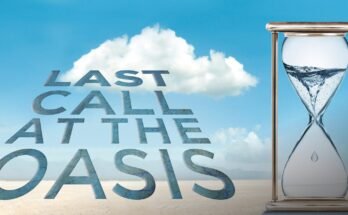Selecting appropriate custom boxes for retail wholesale involves evaluating multiple interdependent factors. Product specifications, including dimensions, weight, and fragility, determine suitable materials and structural designs. Corrugated cardboard offers durability for heavy items, while paperboard provides cost-effective customization options. Brand identity requirements, market positioning, and sustainability goals influence material selection and finishing choices. Strategic packaging decisions optimize protection, aesthetics, and cost-effectiveness while enhancing customer engagement. Further exploration reveals essential considerations for maximizing packaging effectiveness.
Table of Contents
Main Points
- Evaluate product specifications including dimensions, weight, and fragility to select appropriate box materials and sizes for optimal protection.
- Choose between paperboard, corrugated cardboard, or rigid boxes based on product value, shipping requirements, and target market expectations.
- Consider eco-friendly packaging options like Kraft paperboard to meet growing consumer demand and enhance brand reputation.
- Assess minimum order quantities and storage requirements to optimize inventory management and maintain cost-effectiveness.
- Implement quality control measures through testing protocols and inspections to ensure packaging durability and consistency.
Understanding Your Brand’s Packaging Requirements

How effectively a brand packages its products can greatly impact its market success and customer satisfaction. When evaluating custom packaging boxes, brands must assess product specifications, including dimensions, weight, and fragility, to select appropriate packaging materials.
The packaging design should reflect brand identity while meeting target audience expectations and preferences.
Retail packaging decisions require thorough analysis of competitor strategies and market trends to develop distinctive solutions. Different packaging materials must be evaluated against budget constraints and order volumes.
The selection process demands careful consideration of protection requirements, aesthetic appeal, and cost-effectiveness while ensuring the packaging communicates brand values and establishes a competitive advantage in the marketplace.
With eco-friendly materials becoming increasingly important for sustainable packaging, brands can choose from various environmentally conscious options that minimize their carbon footprint.
Essential Factors in Retail Box Selection
The selection of retail packaging boxes requires careful evaluation of multiple interdependent factors to guarantee ideal product protection and market success.
When choosing the right packaging, manufacturers must analyze product dimensions and weight specifications to determine suitable custom boxes that secure both protection and presentation. Different packaging types should align with target market expectations while maintaining consistent quality and delivery standards.
Material selection depends on product characteristics, with corrugated options for heavier items and lightweight alternatives for less fragile goods.
Strategic design elements must reflect brand identity while differentiating from competitors. Cost considerations eventually influence material and customization choices, requiring a balance between aesthetic appeal and budgetary constraints.
Custom fold boxes provide enhanced storage efficiency and quick assembly capabilities for streamlined retail operations.
Material Options for Custom Wholesale Packaging
Selecting appropriate materials for custom wholesale packaging requires a thorough understanding of available options and their specific applications.
Paperboard offers cost-effective customization, while corrugated cardboard provides superior durability for shipping. Material options extend to cardstock variants, available in 14 pt., 18 pt., and 24 pt. thicknesses, accommodating products of varying weights.
Eco-friendly alternatives, including Kraft paperboard and biodegradable materials, meet growing consumer demand for sustainable packaging, with 68% favoring paper over plastic.
Rigid cardboard boxes deliver premium presentation for high-end products, while padded mailers guarantee protection for delicate items.
Each material choice greatly impacts branding effectiveness and product protection.
Measuring and Sizing Guidelines for Retail Boxes
Accurate measurement protocols serve as a foundation for effective retail packaging design, building upon material selection to guarantee ideal product protection and presentation.
When determining box dimensions for custom packaging, professionals measure products on flat surfaces, rounding up to the nearest inch and adding a 0.5-1 inch allowance. Product weight influences corrugated box specifications, with heavier items requiring enhanced structural support.
Efficient measuring practices include grouping similar products to optimize packaging solutions.
Before finalizing product packaging specifications, manufacturers recommend testing sample boxes to verify measurements and assess design functionality. This methodical approach assures precise fit, minimizes transit movement, and maintains product integrity throughout the distribution chain.
Design Elements That Drive Customer Engagement
Strategic implementation of design elements in retail packaging greatly influences customer engagement and purchasing behavior, with specific features driving brand recognition and emotional connections.
When designing custom packaging, bold brand colors enhance recognition by 80%, while unique structural designs optimize the unboxing experience, generating 70% more social shares.
High-quality finishes like matte or glossy coatings elevate perceived product value, increasing sales by 30%.
Premium packaging finishes aren’t just aesthetics – they’re proven sales drivers that boost perceived value and customer conversion rates.
To choose the right box, companies should incorporate personalization elements and interactive features such as QR codes.
These components create immersive experiences for custom product presentation, fostering deeper customer engagement through digital integration and emotional resonance.
Sustainable Packaging Solutions for Modern Retail
Beyond aesthetic design elements, modern retail packaging must address growing environmental concerns and consumer sustainability preferences. Market data indicates that 68% of consumers favor paper-based packaging over plastic alternatives, driving the adoption of sustainable packaging solutions.
Implementing eco-friendly packaging through recyclable materials like kraft paperboard generates multiple benefits: enhanced brand loyalty, expanded market reach, and improved environmental impact.
Companies that incorporate these sustainable practices often experience cost reductions through minimal waste and optimized material usage. The shift toward sustainable solutions reflects both consumer demand and business efficiency, making it a vital consideration for modern retail packaging strategies.
Cost Considerations and Budget Planning
While packaging design plays a crucial role in product presentation, effective cost management determines the financial viability of packaging initiatives. Cost considerations encompass material selection, design customization, and shipping costs, which greatly impact overall budget planning.
Strategic packaging decisions balance aesthetic appeal with financial prudence, ensuring sustainable business growth through careful cost consideration.
When evaluating custom packaging options, businesses must account for minimum order quantities and inventory management to optimize cash flow.
Strategic partnerships with packaging providers enable organizations to balance quality and affordability. Right-sized packaging solutions reduce waste and transportation expenses, contributing to long-term cost efficiency.
Extensive market research and vendor comparison facilitate informed decision-making, ensuring that packaging investments align with business objectives while maintaining financial sustainability.
Printing Techniques and Finishing Options
In today’s competitive market, printing techniques and finishing options serve as critical differentiators for custom packaging success. Various methods, including offset lithography, digital printing, and flexography, enable businesses to optimize their custom boxes based on volume requirements and design complexity.
Coating options encompass gloss, matte, and spot UV treatments, enhancing both visual appearance and durability. Advanced finishing elements like embossing and foil stamping create tactile experiences that reinforce brand identity.
With 93% of consumers making decisions based on visual factors, color selection becomes paramount. Furthermore, eco-friendly inks and coatings appeal to the 68% of consumers who prioritize sustainable packaging, making these considerations essential for market success.
Storage and Shipping Logistics
The effective implementation of custom packaging extends from aesthetic considerations to practical storage and shipping requirements. Precise measurements to make sure products fit securely within shipping boxes is essential for minimizing movement and potential damage during transit.
Custom boxes wholesale operations benefit from standardized sizing systems that optimize warehouse space and streamline fulfillment processes. Efficient storage solutions require systematic inventory management to maintain adequate packaging without supply disruptions.
Organizations can reduce the risk of product damage by incorporating appropriate protective materials while adhering to eco-friendly practices. This approach simultaneously satisfies sustainability goals and enhances shipping efficiency through reduced material waste and optimized dimensional weight calculations.
Quality Control Measures for Custom Packaging
Rigorous quality control measures form the cornerstone of successful custom packaging production, encompassing systematic inspections, material validation, and stringent adherence to design specifications.
Regular inspections at key production stages guarantee consistent packaging quality and early defect detection.
- Third-party quality assurance services provide unbiased evaluations of custom packaging, validating compliance with industry standards.
- Testing protocols, including drop and compression tests, verify packaging materials’ durability and structural integrity.
- Established quality benchmarks for printing, coating, and finishing processes enhance overall functionality and aesthetic appeal.
Implementation of these thorough quality control measures safeguards product integrity while maintaining brand reputation through reliable, high-performance custom packaging solutions.
Conclusion
Custom retail packaging selection requires careful consideration of multiple technical factors, from material specifications to dimensional requirements. Implementation of precise quality control measures, coupled with strategic design elements and cost-efficient production methods, guarantees superior packaging solutions. Organizations must evaluate shipping logistics, storage parameters, and brand consistency while maintaining rigorous quality standards throughout the packaging procurement process.




